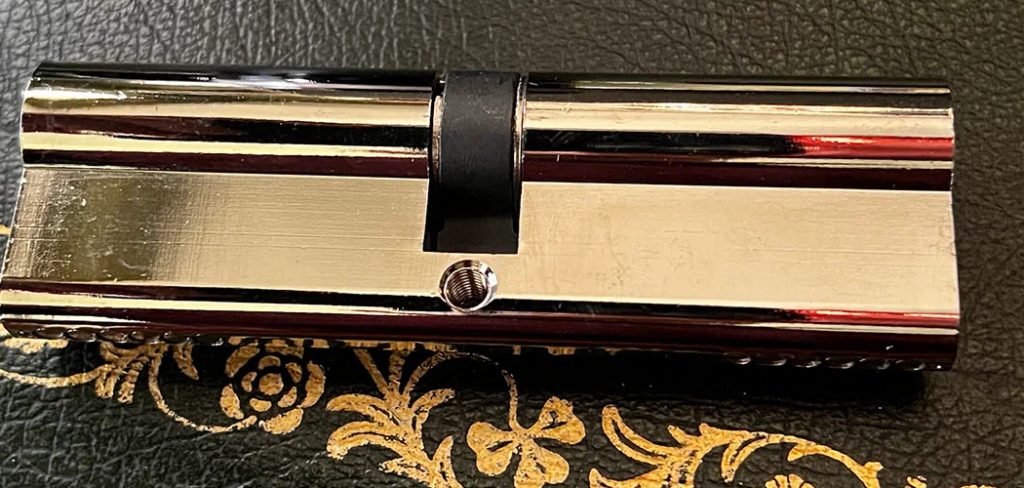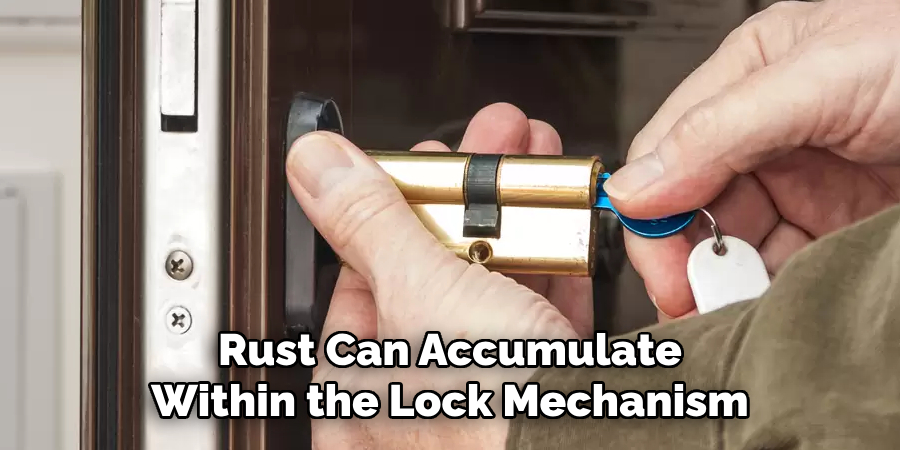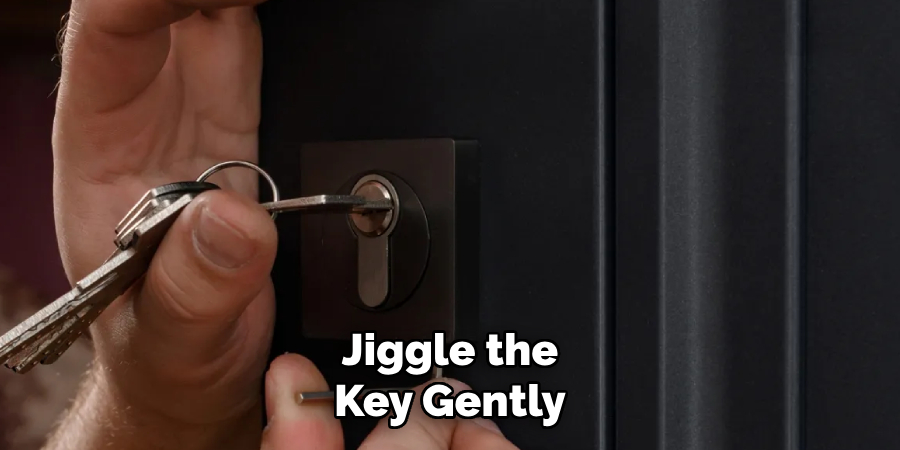It’s not uncommon to encounter a situation where a key becomes stuck in a lock. This can happen for several reasons, such as a misaligned keyhole, debris or dirt within the mechanism, wear and tear over time, or damage caused to the lock or the key itself. In such instances, it’s imperative not to force the key, as applying too much pressure may cause it to break inside the lock.

This can significantly complicate the removal process. Therefore, understanding “how to remove a stuck key” safely is crucial. This guide will explore effective techniques to extract a stubborn key without causing harm to the lock or further complicating the issue. By following the proper methods, you can save time and prevent additional damage, ensuring the continued functionality of both your key and lock.
Understanding the Reasons Why Keys Get Stuck
When attempting to remove a stuck key, it’s essential to identify the root cause of the problem. Here are some common reasons why keys might get stuck in a lock, helping you to effectively address and rectify the situation.
Key Misalignment:
If a key is inserted at an angle, it may not align correctly with the pins inside the lock. This misalignment can prevent the key from moving smoothly within the lock, making it challenging to turn or extract. Ensuring that the key is inserted straight can mitigate the chance of encountering this issue.

Debris or Dirt in the Lock:
Over time, dust, dirt, or even rust can accumulate within the lock mechanism. This buildup can obstruct the key’s movement and jam the lock. Regular maintenance and cleaning of locks can help prevent this problem, ensuring that the internal mechanisms remain free from blockages.
Worn or Damaged Key:
Keys that are worn down or bent from regular use may no longer fit properly within the lock’s mechanism. A distorted key can become stuck if it struggles to engage the pins, making extraction difficult. Inspecting keys regularly and replacing them when signs of wear appear can avert such issues.
Cold Weather:
In freezing temperatures, the metal components of a lock can contract or become iced over. This can cause the lock’s internal mechanisms to stiffen and grip the key tightly, complicating its removal. Applying a de-icer or warming the lock gently can resolve such weather-related challenges.
Assessing the Situation Before Removal:
Before attempting to remove a stuck key, assess the situation carefully. Check whether the key is partially or fully inserted and if it’s turned within the lock or immobile. Assess if the lock itself is damaged or malfunctioning, as this could be the source of the issue. Understanding these factors will guide you in selecting the appropriate removal technique while minimizing the risk of causing further damage.

Preparing to Remove the Stuck Key
Gathering the necessary materials before commencing the removal process can increase the likelihood of success and preserve the lock’s integrity. You may need graphite lubricant or silicone spray to reduce friction within the mechanism. Tweezers or needle-nose pliers can be invaluable for gripping the key and providing precision and control. In some cases, a thin metal wire might aid in clearing debris, while a key extractor tool can be utilized for more stubborn extractions.
When attempting to remove the key, it’s crucial to avoid using excessive force, as this can cause the key to break inside the lock, complicating the situation further. Take your time and carefully analyze the lock’s condition and position before proceeding. This patience minimizes the risk of damaging the lock mechanism and ensures the smooth operation of your lock and key system.
How to Remove a Stuck Key: Step-by-Step Methods
Method 1: Jiggle the Key Gently
Step-by-Step Guide:
- Grasp the key firmly but gently to avoid causing any damage.
- Wiggle the key up and down, ensuring slow and controlled movements.
- As you jiggle, simultaneously pull the key out slowly.
- Move the key in small increments, taking care to avoid any sharp or forceful actions that may bend or break it.

When to Use This Method:
Use this technique when the key seems stuck due to minor misalignment or obstruction within the lock. It is a good first option when the key isn’t deeply jammed, allowing for a quick and simple resolution if the problem is not severe.
Method 2: Use Lubricant
Step-by-Step Guide:
- Apply a small amount of graphite lubricant or silicone spray directly onto the key and into the keyhole.
- Avoid using oil-based lubricants, as they tend to attract dirt over time, potentially worsening the issue.
- Allow the lubricant to penetrate the lock’s interior for a few minutes to reduce friction.
- After letting the lubricant settle, gently wiggle the key while pulling it out. Repeat this process if necessary.
When to Use This Method:
This method is particularly effective if the key is stuck due to the presence of dirt, rust, or debris within the lock. It is particularly beneficial in situations where the lock is old or has not been maintained regularly, as lubricant can help restore some functionality to the components.
Method 3: Push the Key In Further Before Pulling It Out
Step-by-Step Guide:
- Carefully push the key slightly deeper into the lock to ensure it fully engages with the internal pins.
- Once fully inserted, gently turn the key back to its original position.
- Pull the key straight out, avoiding any twisting or tilting motions that might cause it to stick or break.

When to Use This Method:
This approach is advisable when the key is only partially inserted. This prevents it from fully engaging with the lock’s mechanism and causes it to become stuck. By ensuring the key is completely inserted, you can realign it correctly and remove it without difficulty.
Using Tools for Stubborn Keys
When traditional methods fail and the key remains obstinately stuck, utilizing the right tools can significantly ease the extraction process. The following methods offer practical solutions for dealing with keys that require more persistent attention due to their deeply embedded nature or partial protrusion from the lock.
Method 4: Use Pliers or Tweezers
Step-by-Step Guide:
- Assess if the key is protruding slightly enough to allow the use of needle-nose pliers or tweezers.
- Gently grip the end of the key with the tool, ensuring a firm yet delicate hold.
- While maintaining a steady grip, carefully pull the key out, applying minimal force to avoid damage.
- Slightly wiggle the key during the extraction process, taking care not to twist or bend it, as this could cause it to snap within the lock.
When to Use This Method:
This method is effective when the key is far enough out of the lock for a tool to grasp but remains inaccessible to your fingers. Employing pliers or tweezers provides the additional leverage needed to safely extract the key.
Method 5: Use a Key Extractor Tool
Step-by-Step Guide:
- Obtain a key extractor tool, which is available at most hardware or locksmith shops.
- Carefully insert the tool along the side of the stuck key within the lock mechanism.
- Hook the extractor onto the teeth of the key to establish a secure grip.
- Slowly pull both the tool and the key out together, applying consistent and gentle pressure to prevent the key from breaking during the extraction.
When to Use This Method:
This method is particularly effective for stubborn keys deeply embedded in the lock. When other extraction methods prove unsuccessful, a key extractor tool can often resolve the issue due to its design tailored for such situations.
Method 6: Use a Thin Metal Wire
Step-by-Step Guide:
- Straighten a thin piece of wire, such as a paperclip, to use as an extraction tool.
- Carefully insert the wire into the lock alongside the stuck key.
- Gently probe around the key, aiming to dislodge any debris, dirt, or pins preventing the key’s removal.
- Once you detect some movement of the key, try pulling it out slowly with your fingers or tweezers.
When to Use This Method:
Utilize this approach if you suspect debris or a pin inside the lock is obstructing the key’s removal. A thin wire can navigate around the key, reaching spots inaccessible to larger tools. This can help free the obstruction and eventually allow the key to be safely extracted.
When to Call a Locksmith
When All DIY Methods Fail
Suppose your key remains stubbornly stuck after attempting all the DIY methods outlined above. In that case, it might indicate a more serious issue, such as a malfunctioning lock mechanism or a severely bent key. Continuing with forceful efforts could exacerbate the problem, potentially leading to a broken key inside the lock and complicating the extraction process.
Locksmith Services
In such situations, it is advisable to seek the help of a professional locksmith. Locksmiths have the specialized tools and expertise necessary to safely remove stuck keys without damaging the lock or the key itself. Furthermore, if the key extraction leads to further damage or issues, a locksmith can repair or replace the affected lock, ensuring your lock system functions smoothly.
Cost of Hiring a Locksmith
The cost of hiring a locksmith for key extraction services can vary widely, depending on the complexity of the job and the time required. However, it is generally more economical to contact a locksmith initially rather than risk breaking the key within the lock, leading to more expensive repairs. Taking professional assistance early on can prevent further damage and save time and money in the long run, ensuring peace of mind when it comes to your lock and key security.
Preventing Keys from Getting Stuck in the Future
Lubricate the Lock Regularly
Apply graphite or silicone-based lubricant to the lock regularly to prevent dirt buildup and ensure smooth operation. This practice can protect the internal components from corrosion and maintain their efficiency.

Check Keys for Wear and Tear
Examine your keys frequently for signs of wear, such as bent teeth or rough edges. Addressing these issues early and replacing worn keys can prevent them from causing problems and potentially getting stuck in locks.
Ensure Proper Key Insertion
Always make sure the key is fully inserted into the lock before turning it. This precaution helps to avoid jamming and reduces the risk of misalignment within the lock mechanism.
Use a Lock Cover
In cold climates, use a lock cover or lock de-icer to prevent the freezing and contraction of the lock mechanism during winter. This added protection can help ensure that your locks function reliably, regardless of weather conditions.
Conclusion
In summary, successfully extracting a stuck key requires a careful approach, utilizing methods like gentle jiggling or applying lubricants such as graphite to ease the process. When simple solutions fail, employing tools like pliers or specialized key extractors provides effective alternatives. Patience and care are paramount in learning how to remove a stuck key without causing damage to either the lock or the key itself.
By taking a methodical and cautious approach, potential breakage or degradation of the lock mechanism can be avoided. Maintaining locks and keys is critical to prevent such issues, including regular lubrication and checking for signs of wear. Ensuring these practices are part of routine maintenance can significantly minimize the chances of encountering stuck key problems, thereby enhancing the longevity and dependability of your locking systems.
About
Safety Fic is a distinguished figure in the world of Diy design, with a decade of expertise creating innovative and sustainable Diy solutions. His professional focus lies in merging traditional craftsmanship with modern manufacturing techniques, fostering designs that are both practical and environmentally conscious. As the author of diy, Safety Fic delves into the art and science of Safety Fic-making, inspiring artisans and industry professionals alike.
Education RMIT University
(Melbourne, Australia) Associate Degree in Design (Safety Fic) Focus on sustainable design, industry-driven projects, and practical craftsmanship. Gained hands-on experience with traditional and digital manufacturing tools, such as CAD and CNC software.
Nottingham Trent University
(United Kingdom) Bachelor’s in diyfastly.com and Product Design (Honors) Specialized in product design with a focus on blending creativity with production techniques. Participated in industry projects, working with companies like John Lewis and Vitsoe to gain real-world insights.
Publications and Impact
In diy, Safety Fic his insights on indoor design processes, materials, and strategies for efficient production. His writing bridges the gap between artisan knowledge and modern industry needs, making it a must-read for both budding designers and seasoned professionals.
